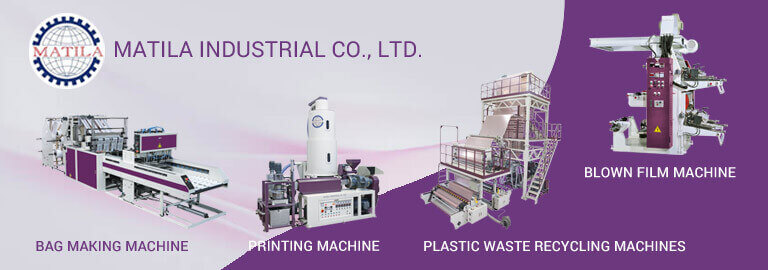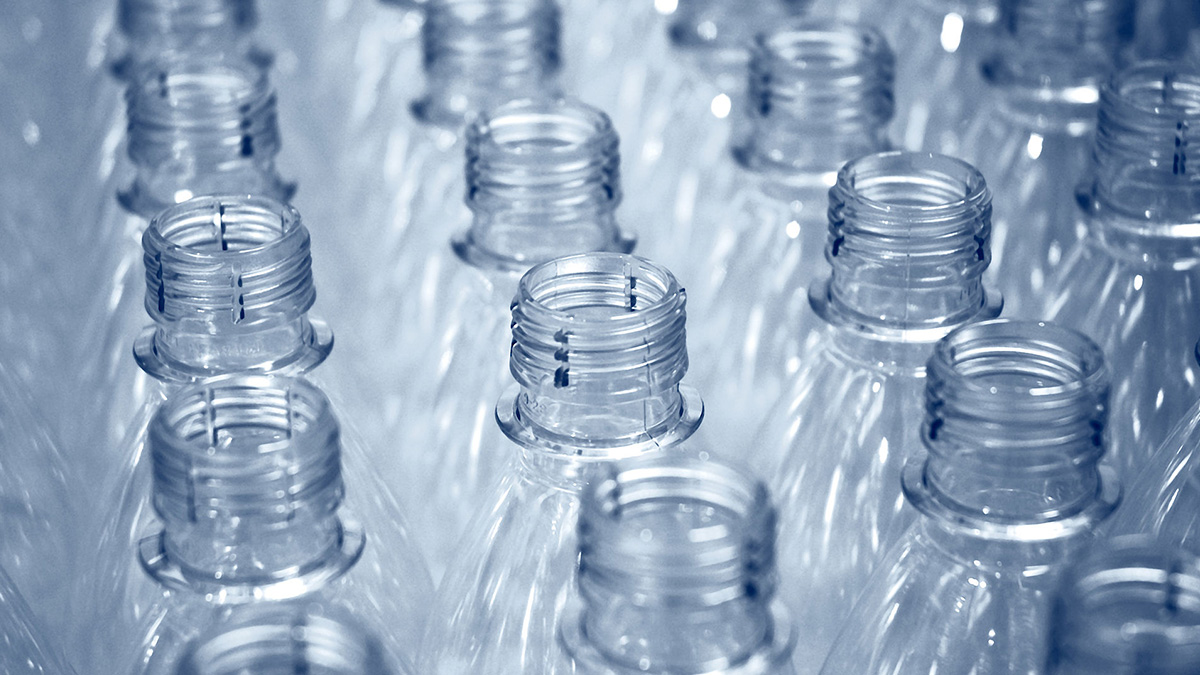Plastic products can be seen everywhere in daily life, and different plastic products are made through different processing techniques. Plastics manufacturing is the process of making plastic into semi-products or products with practical value. Plastics manufacturing usually includes primary processing and secondary processing of plastics.
Basic Knowledge of Plastic Materials
Plastic raw materials are solid or elastomers at room temperature, and the raw materials are heated during processing to make them a fluid, molten liquid. Plastics are classified into "thermoplastic plastics" and "thermosetting plastics" according to their processing characteristics.
"Thermoplastics" can be heated and shaped many times, and are recyclable. Their fluidity is like mucus and has a slow melting state. Commonly used thermoplastics are PE, PP, PVC, ABS, etc. Thermosetting plastics will permanently solidify after heating and cooling. The molecular chains form a chemical bond and become a stable structure, so even if heated again, they cannot reach a molten liquid state. Epoxy resin and rubber are examples of thermosetting plastics.
What Are the Common Plastics Manufacturing Processes?
- Plastics Casting (Dip Molding, Slush Molding, Rotational Molding)
- Blow Molding
- Plastics Extrusion
- Plastic Thermoforming (Compression Molding, Vacuum Forming)
- Plastic Injection Molding
- Plastics Welding (Friction Welding, Laser Welding)
- Plastic Foaming
The followings are some common types of plastic processing processes and details:
- Plastics Casting:
Metals are not the only materials that can be cast; plastics can also be cast. By pouring the liquid plastic material into a mold, letting it cure at room temperature or low temperature, and then taking out the finished product a smooth surfaced object is produced. This process is often called casting. Materials often used are acrylic, phenolic resin, Polyester, and Epoxy. They are often used to make hollow products, plates, etc., and the plastic processes used include Dip Molding, Slush Molding, and Rotational Molding
- Dip Molding:
Soak the high-temperature mold in the molten plastic liquid, then slowly take it out, dry it, and finally peel off the finished product from the mold. The speed of removing the mold from the plastic needs to be controlled. The slower the speed, the thicker the plastic layer. This process has cost advantages and can be produced in small quantities. It is commonly used in the production of hollow objects such as balloons, plastic gloves, hand tool handles, and medical equipment.
- Slush Molding:
Pour the molten plastic liquid into a high-temperature mold to make a hollow product. After the plastic forms a layer on the inside surface of the mold, the excess material is poured out. After the plastic solidifies, the mold can be opened to take out the parts. The longer the plastic stays in the mold, the thicker the shell. This is a relatively high-degree-of-freedom process, and can produce more complex shapes and obtain good appearance details. Car interiors are commonly made of PVC and TPU which is often used for surfaces such as on instrument panels and doorknobs.
- Rotational Molding:
Put a certain amount of plastic molten liquid into the heated two-piece closed mold, and then rotate the mold to distribute the material evenly on the mold wall. After solidification, the mold can be opened to take out the finished product. In the process, air or water is used to cool down the finished product. The finished product must have a hollow structure, and because of the rotation, the finished product will have a soft curve. In the beginning, the amount of plastic liquid determines the wall thickness. It is often used to make axially symmetrical circular objects, such as pottery flower pots, children's play equipment, lighting equipment, water tower equipment, and so on.
Blow Molding:
Blow molding is also called hollow molding. The middle of the machine is covered with a blowing device. Raw plastic material is heated and passed through a die which will extruded the plastic as a hollow tube strip. When the two molds are closed, they will cut off the remaining material, and then air is blown into the mold. At this time, the plastic will fill up the entire inner wall of the mold like blowing up a balloon, and finally, the finished product will be taken out after cooling. The materials used are ABS, LDPE, HDPE, PP, PC, PS, etc., and the products are mostly various bottles and cans, and liquid-filled parts used in automobiles and medical treatment.
Plastics Extrusion:
Extrusion molding involves heating and softening the thermoplastic material and then extruding it into the molding die for molding. The plastic will form a cross-section consistent with the die. After a long section is extruded it is cooled and then, according to the need, is cut to the required length. Extrusion molding equipment has low cost and is widely used. Most of them adopt automated production, and are mainly used to produce pipes, plates, rods, films, water pipes, parts, plastic plates, plastic strips, cables, etc.
Plastic Thermoforming:
Thermoforming is placing a material with uniform thickness in a mold, heating it to soften the material, covering the surface of a mold with the material, and then extruding it when cooled with an external force. After the cooling stage it solidifies, giving the finished product. Thermoforming can be subdivided into hot press molding (compression molding) and vacuum molding. The difference lies in the different ways of applying pressure.
- Compression Molding:
Compression molding is a method in which plastic granular materials are placed on a heated mold and formed by a downward pressure from a second mold at the same high temperature. It is also called hot compression molding. The wall thickness of the finished product depends on the gap between the molds. When the molds are separated, the finished product will be pushed out by a thimble. Because there is no pouring port and runner system in the process, raw materials are not likely to be lost. Plastic materials that can be formed include PF, MF, UF, and EP. Post-processing removes unnecessary excess material. Compression molding is commonly used to make thermosetting plastic products and plastic products with glass fiber reinforced materials. It is especially suitable for objects with simple shapes, no inner chamfers, and thicker parts, such as heavy parts, sockets, cups, and plates, etc.
- Vacuum Forming:
Vacuum forming can also be called vacuum thermoforming. After the plastic sheet is evenly heated to soften, the machine will contact the plastic sheet with the mold, and draw the air out to form a vacuum state, allowing the plastic sheet to tightly cover the mold for molding. The finished product is allowed to cool down on the mold. Because vacuum forming is a low-pressure process, there are few restrictions on the mold material. Vacuum forming technology is suitable for proofing and mass production. Wood and plaster can be used in small quantities, while epoxy resin or wear-resistant aluminum can be used as molds for mass production. All forms of thermoplastic plastic sheets can be used, and the most common are PS, ABS, acrylic, and PC. They are commonly used for applications such as baking utensils, bathtubs, packaging materials, furniture, car interiors, etc.
Plastic Injection Molding:
In plastic injection molding, granular raw materials are fed into the machine, where it is heated and the molten plastic is injected into a stainless-steel mold with high temperature and high pressure. The temperature is then lowered, and the finished product is ejected with a thimble. The range of materials and applications that can be used is wide because steel molds can produce complex, high-precision, and diverse finished products. The relative cost of mold opening is high, so output is usually increased to share the mold cost. Plastic injection molding can produce a wide range of items, including daily necessities, auto parts, medical equipment, electronic products, baby toys, and so on.
Plastic Welding:
Welding is the process of using heat to melt thermoplastics to join plastic objects. The methods are divided into contact and non-contact; contact types of welding include vibration friction welding, and non-contact types include ultrasonic, laser, infrared, gas convection welding, etc.
- Friction Welding:
Under a set pressure, vibration amplitude, and frequency, two plastic objects quickly rub against each other to generate heat. The plastic changes to a molten state at the joint surface, and the two surfaced are clamped together to form the joint. This process id suitable for thermoplastic materials and semi-crystalline resins such as HDPE, PP, and TPO. Common applications are car intake manifolds, instrument panels, car lights, and other aerospace applications. Usually, the molten plastic will flow out from the joint to produce flash, but this kind of process does not require high-cost molds to achieve a good air-tight joint.
- Laser Welding:
Laser welding is used the two objects must be superimposed. The upper layer can be penetrated by laser light. The laser light will penetrate the upper layer and illuminate the lower layer which absorbs the laser light. The lower surface melts and conducts heat to the upper object. Clamps are used to regulate the tightness between objects, and similar plastics have a high degree of connection stability.
Plastic Foaming:
The difference between foam molding and other molding is that in foam molding, the material needs to be expanded before the material is poured into the mold. Most thermoplastics and thermosetting plastics such as PUR, EPS, PVC, EPE, EPP can be processed into foamed materials. The spherical raw material will be thermally expanded to 40 times its original size using pentane and hot steam. The material is allowed to stand for about 12 hours and then heated in the injection mold or injection machine, where the particles fuse and mold at high temperatures. Foam material can greatly reduce the weight of the finished product. It is good for physical buffering, thermal insulation, electrical insulation, and sound absorption. It can be mass produced and processed in a wide range of sizes and forms such as fruit packaging, surfboards, bicycle helmets, car interiors, etc.

Referral Link








.png)






